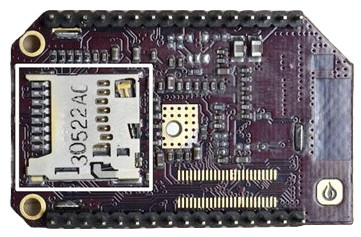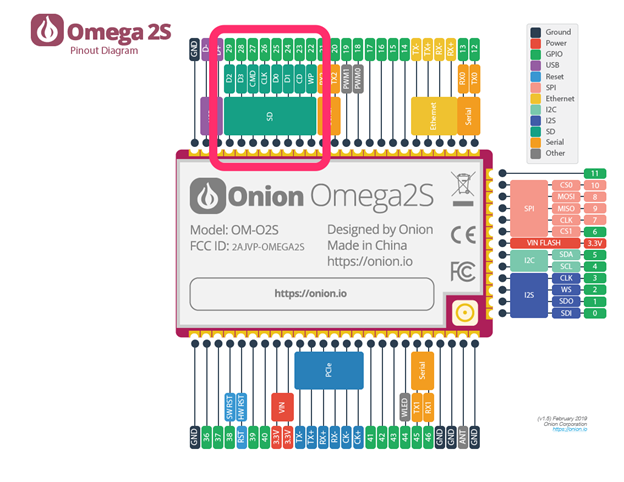SDIO / eMMC
Introduction
The Omega2 features an SDIO/eMMC interface that enables the use of SD/MicroSD cards or eMMC storage chips.
- Omega2: Does not have a microSD slot and does not expose the SDIO/eMMC interface.
- Omega2+: Has a microSD slot.
- Omega2S/2S+: Provides the SDIO/eMMC interface on exposed pins.
Hardware
The Omega2 has a single SDIO interface.
Only one device can be specified on the interface port at design time: eMMC, SD/Micro-SD, or other SDIO.
The interface supports the SDXC specification for SD cards, with a maximum capacity of 2 TB and a maximum transfer speed of 300 MB/s. It also supports the eMMC5.1 interface for eMMC storage.
- Omega2
- Omega2S
The microSD slot is highlighted on the Omega2+ photo below.

The SDIO/eMMC pins are highlighted on the Omega2S diagram below.

See Omega2S hardware design guide for more information and recommendations on designing boards with microSD card slots or eMMC.
SD Card
When you insert an SD Card into the microSD slot you will see a message like the following:
[2757.012387] mmc0: new high speed SDHC card at address 0007
[2757.026510] mmcblk0: mmc0:0007 SD8GB 7.21GiB
[2757.033860] mmcblk0: p1
Mounting the file system
The file system from the SD card will be automatically mounted to the /mnt/ directory, with the name of the device and the file system partition name as the full path, so /mnt/mmcblk0p1 in this case:
root@Omega-F19D:/# ls -l /mnt/mmcblk0p1/
rw-r--r 1root root 29 Nov 21 17:09 log.txt
Unmounting the file system
Before removing the SD card, you must unmount the file system.
umount /mnt/mmcblk0p1